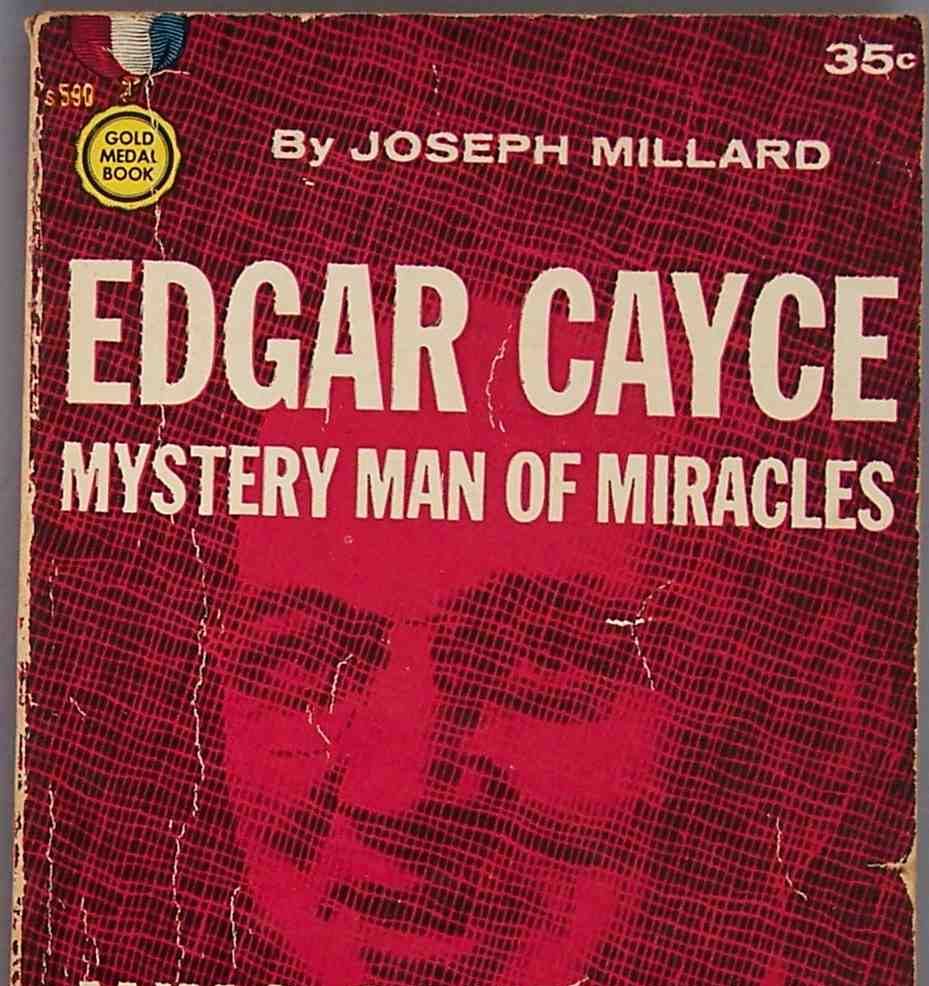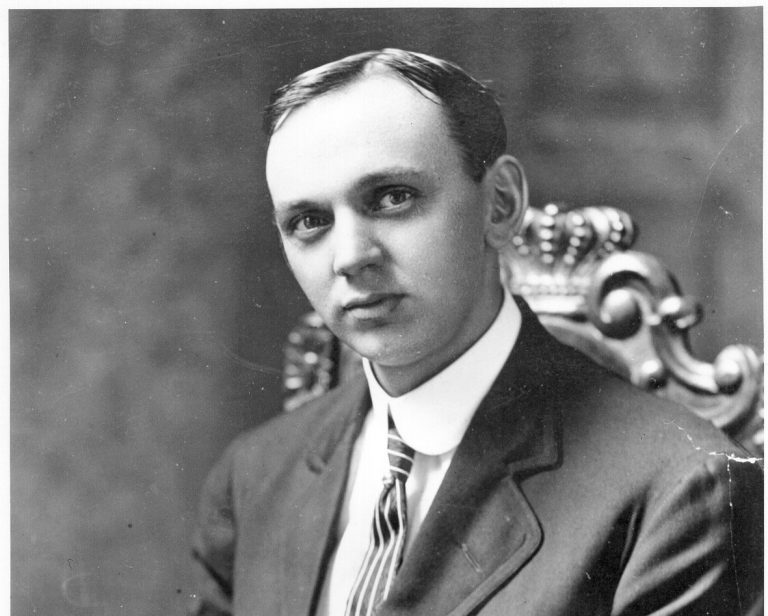Edgar Cayce, considered an important pioneer in the New Age movement, was believed to have had an extraordinary gift. He could enter into a state of sleep, yet clearly communicate his visions to a companion. These visions seemed to come from another time and place, as they often correctly diagnosed and prescribed the remedy for ailments of people whom he had never met, even if the person was thousands of miles away.
Born in 1877 on a farm in Christian County, Kentucky, Cayce dropped out of school in the eighth grade. He knew nothing about medicine and had never read an anatomy book, yet his diagnoses in a hypnotic state used accurate anatomical and medical terms, and his treatment plans yielded remarkable results. He is said to have cured a Canadian Catholic priest of epilepsy, relieved an Ohio high school student of severe arthritis, and helped a boy with glaucoma regain his eyesight. These are the kind of uncanny performances that made Cayce famous.
The distance Cayce was purported to span in his readings was not limited to space. Some of his most fascinating cases involved the interpretation of events from ages ago, when the patient lived in a “previous incarnation.” Upon reviewing the records of these readings, Cayce came to believe that people’s misfortunes and sufferings in this life had a precise cause-and-effect relationship with the “karma” generated by bad deeds in previous lives.
The suffering in ancient Rome may carry through to the present
Among Cayce’s 14,000 past life readings, some cases went back to the time of Nero in ancient Rome.
There was a 45-year-old woman who had been paralyzed for nine years from polio. After trying various treatments to no avail, she approached Cayce for a past life reading. Cayce told her that the cause of her paralysis in this life could be traced back to the reign of Nero, the tyrant of ancient Rome, when she was a member of the royal family.
Success
You are now signed up for our newsletter
Success
Check your email to complete sign up
According to the account of Tacitus, a Roman historian of that era, on July 19, 64 A.D., a great fire broke out in the city of Rome and burned for six days and nights, destroying 10 of the city’s 14 quarters. The residents of Rome generally believed that Emperor Nero had set the fire. In order to dispel their suspicion, Nero blamed the Christians for the arson and persecuted them ruthlessly throughout his 12 year reign.
Many Christians were forced to wear skins that made them look and smell like animals. Then they were sent into the Colosseum, where a pack of hounds or wild beasts were released to tear them apart. Nero had other Christians bound together with hay to make torches, which were then placed in the gardens and lit on fire at night to illuminate his parades.
Cayce’s reading revealed that this woman, as a member of the royal family, went to the arena to watch the bloody performance. Not a shred of compassion was shown for those who were injured and maimed; indeed, she laughed out loud. Cayce’s reading remarked: “This spirit laughed at those who were crippled in the arena. Behold! The same thing returns to oneself!”

In another case, Cayce’s reading determined that the patient, a girl who suffered tuberculoses of the hip, had also been a noblewoman of the royal court of Nero’s time in her past life. She, too, had enjoyed watching the persecution of Christians in the arena, and especially laughed at the sight of a girl’s body being torn apart by a lion.
According to Cayce’s understanding, even though the patients had not committed the atrocities themselves, their mocking nature and enjoyment of the horrific suffering marked a character flaw that needed to be corrected. Punishment, in the form of present suffering, was meant to educate and redeem, to give the soul a chance to conform to the standards that Heaven requires of human beings.
Abuse of power leads to a life of poverty
One man was determined in Cayce’s reading to have been a warrior during that same time period, and seemed to be of a high class. In any case, his status was such that he was able to abuse his position of authority to take advantage of others and obtain much more money than he was paid. The exploited individuals suffered tremendously due to his misdeeds.
Cayce explained that where power was abused, it had to be corrected. This man’s present life was spent struggling with poverty, homelessness, and hunger. He worked hard as a tailor but could never earn enough money to support his wife and five children. He relied on the generosity of his American relatives to make ends meet in the slums of London.
But Cayce also found that if a patient could reflect on himself and improve his nature while enduring suffering, the purpose of punishment would be achieved, and the person’s troubles could be resolved. The following case resolution exemplifies this understanding.
Chronic bedwetting cured through hypnosis
An 11-year-old boy had suffered since the age of two from chronic bedwetting, nearly every night. His parents had taken him to many renowned doctors but were unable to cure him. Cayce was their last hope. Cayce interpreted from his reading that the boy had been a Puritan priest in a previous life, living in the 16th or 17th centuries during the time of witch trials, when he had enjoyed inflicting punishment on accused witches by dipping them quickly in and out of a cold pool.
Cayce recommended that the mother apply the hypnotic tool of “suggestion.” When the boy was about to fall asleep at night, she repeatedly whispered “You are kind and good, you are willing to make everyone happy, you are willing to help everyone you come in contact with.” The boy was said to have stopped wetting the bed that very night, and within a few months of this treatment, he was entirely cured.
Here, the mother’s “suggestion” seemed to have touched the child’s subconscious memory of his past life, helping him untie the knots in his heart. Once he felt confident to be his good and tolerant self, the child’s behavior changed drastically; his heart became good, and in the future, he would help others and do good deeds to redeem his past life’s sins; thus, the punishment was no longer necessary, and his illness was correspondingly cured.
The theory of reincarnation
While many, including Cayce himself during his earlier years, have found the idea of reincarnation difficult to accept, others see it as a natural continuation of the body’s undying soul.
While mainstream Christian teachings do not endorse a belief in reincarnation, it plays a central role in other faiths, notably Hinduism and Buddhism, which hold that one must repay the karmic debts owed for wrongdoing in both this life, and those accumulated in other lives as well..
Upon learning that his past life interpretations were accurate and credible, and could be used for good, Cayce gradually broadened his mind and accepted his gift to interpret past lives.
With this, he not only improved his ability to heal, but also had unique insights in the fields of philosophy, history, and ancient civilizations. His prophetic abilities, too, were extraordinary. According to supporters, he was able to accurately predict the economic crisis of 1929, World War II, and the accidental death of the President of the United States, giving him the nickname “Sleeping Prophet.”















